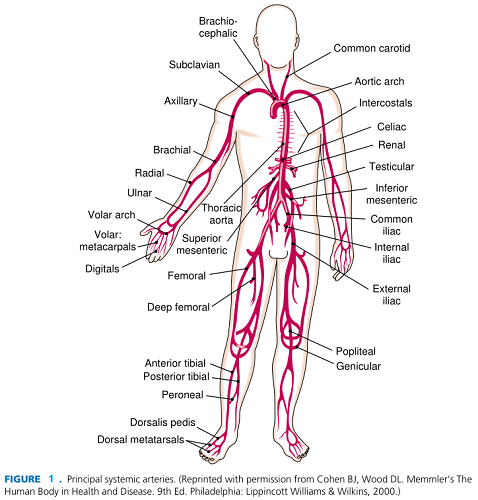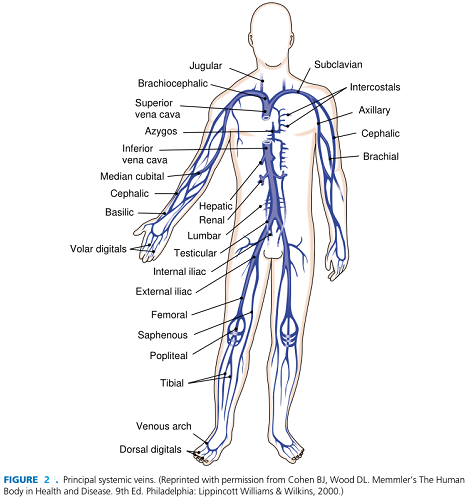- 签证留学 |
- 笔译 |
- 口译
- 求职 |
- 日/韩语 |
- 德语
The vascular system consists of:
1. Arteries that carry blood away from the heart(FIGURE 1). Arterioles are small arteries that lead into the capillaries.

2. Capillaries, the smallest vessels, through which exchanges take place between the blood and the tissues.
3. Veins that carry blood back to the heart (FIGURE 2). The small veins that receive blood from the capillaries and drain into the veins are venules.

All arteries, except the pulmonary artery (and the umbilical artery in the fetus), carry blood high in oxygen. They are thick-walled, elastic vessels that carry blood under high pressure. All veins, except the pulmonary vein (and the umbilical vein in the fetus), carry blood low in oxygen. Veins have thinner, less elastic walls and tend to give way under pressure. Like the heart, veins have one-way valves that keep blood flowing forward.
Nervous system stimulation can cause the diameter of a vessel to increase (vasodilation) or decrease (vaso-constriction). These changes alter blood flow to the tissues and affect blood pressure.
责任编辑:admin
